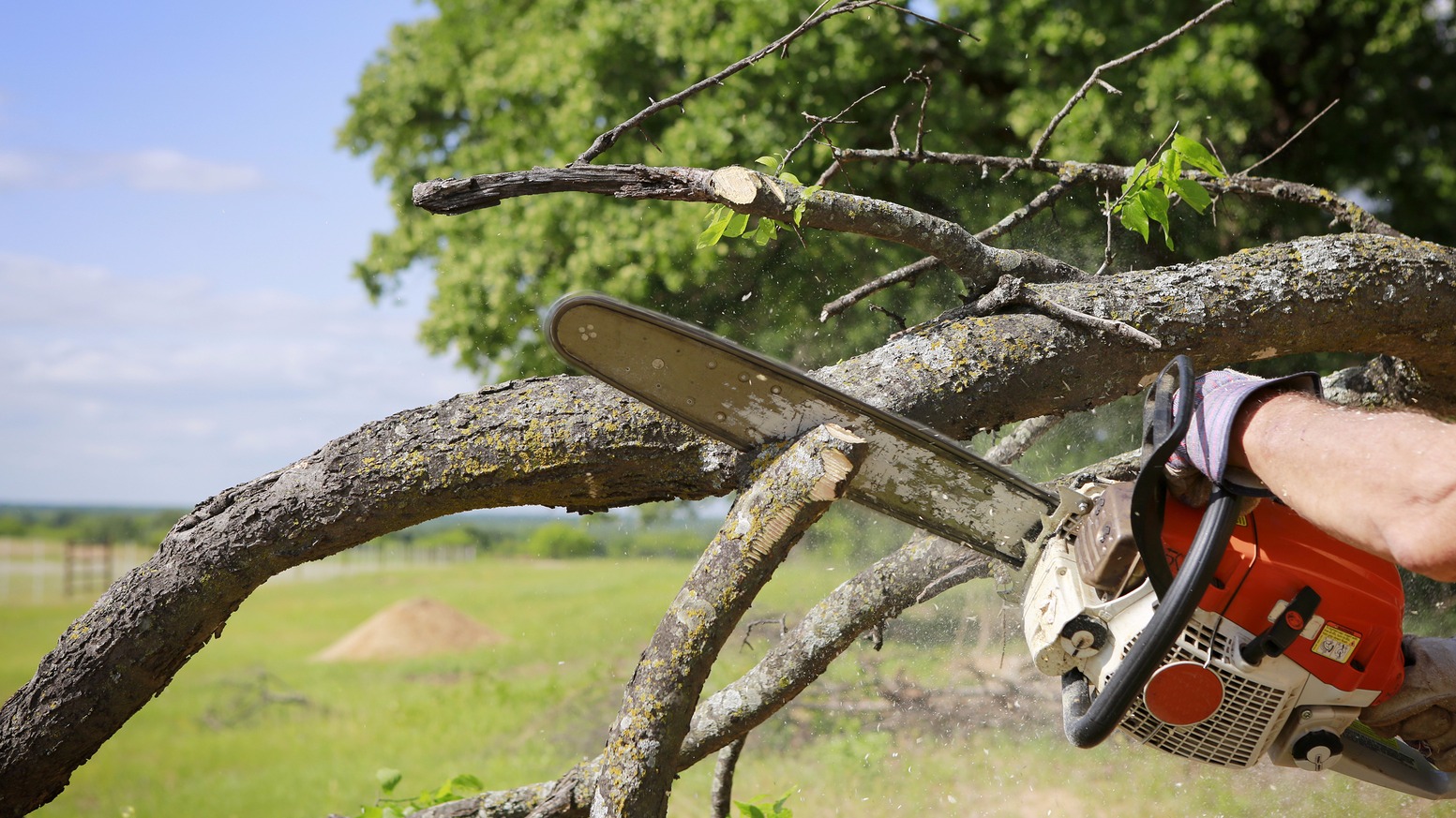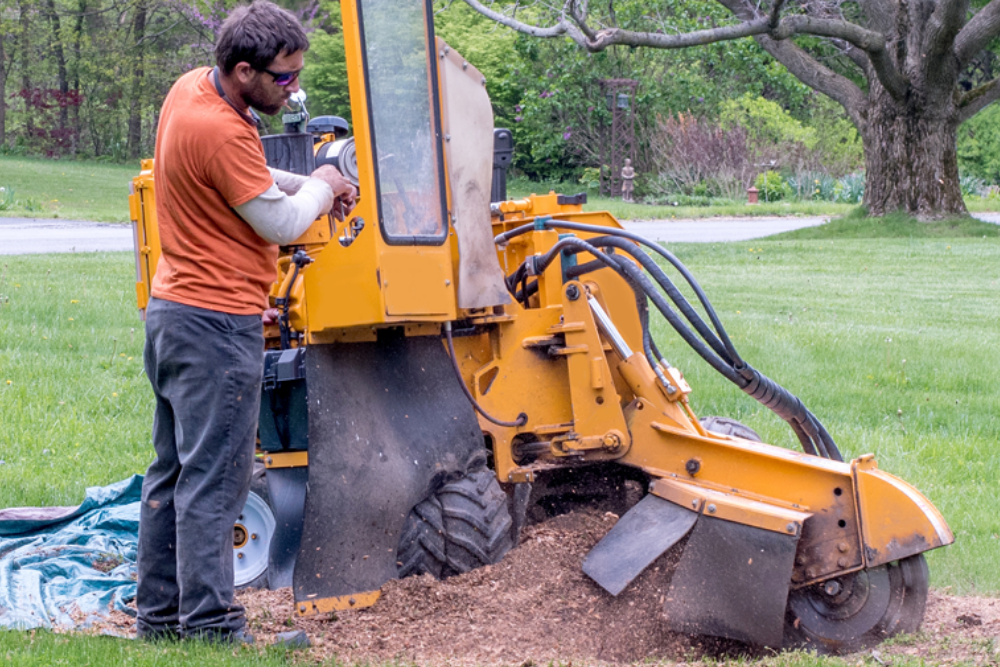Tree Removal
Tree removal is an inevitable reality for homeowners with trees on their property. As trees age they can succumb to a host of stresses and diseases. Eventually, trees lose structural integrity and need to be removed to prevent damage to people and property. Trees may also need to be removed to reduce competition with remaining trees or to clear an area for new structures. Often trees are located near offices, homes, utility lines, and other sensitive areas. Woodland Tree Service’s highly trained arborists and field crew have the equipment and experience required to remove trees safely and efficiently.

Manual Removal
WoodlandTree Service uses tree climbers for manual tree removal. Climbers are not limited by access and have less impact on the landscape than bucket trucks. Our experienced tree climbers are also faster and more versatile than using bucket trucks to remove trees. When space and landscape features allow, felling the tree is often the most efficient and safest method to remove the tree. In this process, the tree is cut and felled directionally to the ground, where it is then cut into pieces and removed from the property. In more confined space, climbers rig tree limbs, remove them from the standing tree, and lower them to the ground in pieces appropriate for the situation. Rigging is often the preferred tree removal method near homes and in areas with minimal access.
Crane Removal
Large trees often require a crane for removal. When access allows, cranes provide a removal method where large trees can be removed efficiently and safely. Woodland Tree Service utilizes small and large cranes so equipment can be matched to the specific needs of the job. During crane removal, limbs are secured to the boom, cut, and then lowered to the ground where they can be fed to the chipper or loaded into a log truck. In situations where large amounts of material are being removed, mechanical skid steers are utilized to move logs and debris as needed.
Low Impact
Our operations are low impact to the surrounding landscape. Our arborists and field crew plan the most efficient and low impact removal method for your specific property. When needed, plywood and rubber mats are utilized to reduce impact to turf and sensitive driveways. Our skid steers are outfitted with low impact landscape tracks that enable us to move large material easily over lawns and driveways. These methods and equipment allow us to remove the tree and debris from your property with minimal disturbance.
Stump Grinding
Once the tree is removed, remaining stumps can be ground 4-6 inches below ground surface leaving the area sod ready and visually clear. Trees surrounding our homes and property need to be managed to fulfill their beneficial potential.

As beneficial and aesthetically pleasing as trees are, at some point they all need to be removed. The arborists at Woodland Tree Service can help you manage your trees, determine when removal is the best management option, and remove the tree safely and efficiently.
Tree Trimming
Pruning is the most common tree maintenance procedure. Although forest trees grow quite well with only nature's pruning, landscape trees require a higher level of care to maintain their safety and aesthetics. Pruning should be done with an understanding of how the tree responds to each cut. Improper pruning can cause damage that will last for the life of the tree, or worse, shorten the tree's life.
Reasons for Pruning
Since each cut has the potential to change the growth of the tree, no branch should be removed without a reason. Common reasons for pruning are to remove dead branches, to remove crowded or rubbing limbs, and to eliminate hazards. Trees may also be pruned to increase light and air penetration to the inside of the tree's crown or to the landscape below. In most cases, mature trees are pruned as a corrective or preventative measure. Routine thinning does not necessarily improve the health of a tree. Trees produce a dense crown of leaves to manufacture the sugar used as energy for growth and development. Removal of foliage through pruning can reduce growth and stored energy reserves. Heavy pruning can be a significant health stress for the tree. Yet if people and trees are to coexist in an urban or suburban environment, then we sometimes have to modify the trees. City environments do not mimic natural forest conditions. Safety is a major concern. Also, we want trees to complement other landscape plantings and lawns. Proper pruning, with an understanding of tree biology, can maintain good tree health and structure while enhancing the aesthetic and economic values of our landscapes.
When to Prune
 Most routine pruning to remove weak, diseased, or dead limbs can be accomplished at any time during the year with little effect on the tree. As a rule, growth is maximized and wound closure is fastest if pruning takes place before the spring growth flush. Some trees, such as maples and birches, tend to "bleed" if pruned early in the spring. This may be unsightly, but is of little consequence to the tree. A few tree diseases, such as oak wilt, can be spread when pruning wounds allow spores access into the tree. Susceptible trees should not be pruned during active transmission periods. Heavy pruning just after the spring growth flush should be avoided. This is when trees have just expended a great deal of energy to produce foliage and early shoot growth. Removal of a large percentage of foliage at this time can stress the tree.
Most routine pruning to remove weak, diseased, or dead limbs can be accomplished at any time during the year with little effect on the tree. As a rule, growth is maximized and wound closure is fastest if pruning takes place before the spring growth flush. Some trees, such as maples and birches, tend to "bleed" if pruned early in the spring. This may be unsightly, but is of little consequence to the tree. A few tree diseases, such as oak wilt, can be spread when pruning wounds allow spores access into the tree. Susceptible trees should not be pruned during active transmission periods. Heavy pruning just after the spring growth flush should be avoided. This is when trees have just expended a great deal of energy to produce foliage and early shoot growth. Removal of a large percentage of foliage at this time can stress the tree.
Making Proper Pruning Cuts
Pruning cuts should be made just outside the branch collar. The branch collar contains trunk or parent branch tissue and should not be damaged or removed. If trunk collar has grown out on a dead limb to be removed, make the cut just beyond the collar. Do not cut the collar. If a large limb is to be removed, its weight should first be reduced. This is done by making an undercut about 12-18 inches from the limb's point of attachment. A second cut is made from the top, directly above or a few inc
Comments
Post a Comment